Papers by Jenny Sunga-Amparo
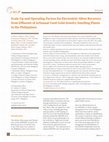
Background. The Marilao, Meycauayan and Obando river system (MMORS), in the
Philippines is home t... more Background. The Marilao, Meycauayan and Obando river system (MMORS), in the
Philippines is home to many precious metals refineries, where local artisanal gold smelting
industries use silver to draw gold out of used jewelry. Copper recovers the silver. The copperrich
wastewater contributes to local pollution. Alternative methods for silver recovery
include electrolytic recovery: removal of silver ions from solution, and conversion of the ions
into metallic silver.
Objectives. Explore operation and scale-up for the electrolytic recovery of silver for small-tomedium-
scale used gold smelting plants.
Methods. Effects of current and time were investigated in a laboratory scale, magneticallystirred
electrolysis reactor, using a sintered platinum anode and a stainless steel cathode.
Silver recovery (the removal of silver ions from solution) was evaluated at different levels of
constant operating current, and data was used to determine charge dose as the scale up and
operating factor. Charge dose was then used to obtain the operating conditions on a pilot
scale (100 L) system. A preliminary pilot test assessed silver recovery performance.
Results. Higher silver removal rates were noted at higher operating currents.
Electrodeposition at 9 amperes showed 98.7% silver recovery after 30 mins. The charge dose
for silver electrodeposition was 1.23 coulombs/mg silver ions removed, while the average
electrolysis energy requirement was about 0.59 kilowatt hours/kg of silver removed.
Conclusions. Preliminary comparisons on a 100-liter scale, showed the electrolytic process
had a higher silver removal (~ 90%) compared to copper displacement (~ 65%). Results are
useful for the process design of a complete field test system.

The study looked into the process of determining social acceptability (SA) of a possible
quarryin... more The study looked into the process of determining social acceptability (SA) of a possible
quarrying project in Barangay San Rafael, Rodriguez, Rizal Province, Philippines. In particular,
it described the timing, stakeholders involvement as well as the methods and tools used in the
process of determining the SA of LSQ. It also explained the results of the process of SA study.
Furthermore, it analyzed the process in which the SA of a quarrying project was determined.
The manner of determining social acceptability of a large scale project undertaken in
participation. Furthermore, the differing views by different stakeholders were articulated. The
study through the different data gathering methods (FGD, KII and social survey) became
instrumental in a favorable process of determining social acceptability. The process contributed
to the realization of genuine people’s participation in several ways. It helped: (1) raised people’s
information about a possible quarrying project; (2) people reclaimed their voice; (3) different
attitude positions are revealed and understood and (4) most important concerns about quarrying
are openly discussed.
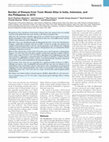
BACKGROUND: Prior calculations of the burden of disease from toxic exposures have not included
es... more BACKGROUND: Prior calculations of the burden of disease from toxic exposures have not included
estimates of the burden from toxic waste sites due to the absence of exposure data.
OBJECTIVE: We developed a disability-adjusted life year (DALY-based estimate of the disease
burden attributable to toxic waste sites. We focused on three low- and middle-income countries (LMICs): India, Indonesia, and the Philippines.
METHODS: Sites were identified through the Blacksmith Institute’s Toxic Sites Identification Program, a global effort to identify waste sites in LMICs. At least one of eight toxic chemicals was sampled in environmental media at each site, and the population at risk estimated. By combining
estimates of disease incidence from these exposures with population data, we calculated the DALYs
attributable to exposures at each site.
RESULTS: We estimated that in 2010, 8,629,750 persons were at risk of exposure to industrial pollutants at 373 toxic waste sites in the three countries, and that these exposures resulted in 828,722 DALYs, with a range of 814,934–1,557,121 DALYs, depending on the weighting factor used. "is disease burden is comparable to estimated burdens for outdoor air pollution (1,448,612 DALYs) and malaria (725,000 DALYs) in these countries. Lead and hexavalent chromium collectively
accounted for 99.2% of the total DALYs for the chemicals evaluated.
CONCLUSIONS: Toxic waste sites are responsible for a significant burden of disease in LMICs.
Although some factors, such as unidentified and unscreened sites, may cause our estimate to be an
under estimate of the actual burden of disease, other factors, such as extrapolation of environmental
sampling to the entire exposed population, may result in an over estimate of the burden of disease
attributable to these sites. Toxic waste sites are a major, and heretofore underrecognized, global
health problem.
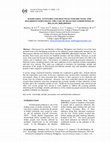
Meycauyan City and Marilao in Bulacan, Philippines were listed as two of the most polluted cities... more Meycauyan City and Marilao in Bulacan, Philippines were listed as two of the most polluted cities in the developing world due to the industrial wastes haphazardly dumped into the Meycauayan, Marilao and Obando River System (MMORS) (Blacksmith Institute, 2007). For decades, these towns were known for beautiful jewelries and fine leathers. However, in recent years, these areas had become the biggest producers of the used lead acid battery (ULAB) in the country and in Southeast Asia. The presence of industries producing poisonous substances is believed to have contributed much to the heavy pollution of toxic materials in these communities and their river systems. This study was conducted to determine the knowledge, attitude and perception of the people in Meycauayan and Marilao towards toxic and hazardous substances present in their respective communities.
A survey using a structured interview schedule was conducted to gather data. Results showed that the respondents were aware of the toxic substances that can harm their community and their environment. Many of them associated their diseases to their exposures to the chemicals and fumes from the industries mentioned. However, they have undecided attitude and perception towards these industries since they recognized the economic benefits of these industries to their families and to the community people as well. While the local government units concerned and other civil society groups have started to work together to address this pressing problem, identifying the knowledge, attitudes and behavior of the community people towards this pressing problem is deemed very important.
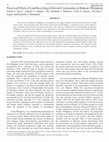
The province of Bulacan, Philippines is considered as the biggest producer of used lead acid batt... more The province of Bulacan, Philippines is considered as the biggest producer of used lead acid battery (ULAB)
in the country and in Southeast Asia. But with the boom of the ULAB industry, a continued concern on the industry’s
Philippines to determine the perception of the respondents on the effects of lead recycling to their health and their
community. These two areas are where ULAB industry is concentrated.
Data were gathered from primary and secondary sources. Interview schedule using a structured interview guide
and key informant interview were used. The respondents believed that there are toxic and hazardous substances used in
lead recycling that contributed to their health problems and environmental pollution.
include air, soil and water. But while they are aware of the health and environmental risks this industry brings, they
also recognized its economic contribution to their families and their respective communities. The complexity of the
problem continues to pose a challenge that needs to be addressed soon to balance economic prosperity and the
communities’ welfare.
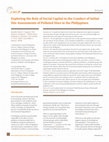
Background. A number of studies have shown how enhanced social capital can improve environmental ... more Background. A number of studies have shown how enhanced social capital can improve environmental outcomes through decreased transaction costs, increased knowledge and information flow, and improved monitoring and enforcement.
Objectives. Social capital plays an important role in reducing adversarial perceptions of initial site assessments of toxic hotspots. It also mobilizes stakeholders to work together to come up with a holistic and comprehensive site assessment. "is paper explains the role of social capital in the conduct of the Blacksmith Institute’s Global Inventory Project site assessment
protocol in the Philippines.
Methods. The study describes and analyzes the role of social capital in the conduct of the initial site assessment based on the actual experiences and observations of the authors and a
review of discourse that took place during regular meetings of the Blacksmith Institute’s local investigative team.
Results. As of June 2011, 105 polluted sites have been identified in the Philippines. Information on the location and background of these sites came from a variety of sources,
including government, environmental NGOs, academic institutions, community groups and industry associations. Seventy percent of used lead-acid battery recycling sites assessed were referred by the industry. More than 40% of artisanal and gold-mining sites were referred by regional government and local contacts.
Conclusions. Social capital has played an important role in the conduct of the Blacksmith Institute’s initial site assessment protocol. Relationships and networks within the group and
among di$erent organizations build and expand the social capital of the team and facilitate the site assessment process by making it easier to coordinate with local authorities and
gain better access to research, data and key persons. It also encourages local stakeholders to take ownership of assessment findings, sometimes leading to the mobilization of various community sectors in reviewing and planning interventions to address specific health and
pollution issues.
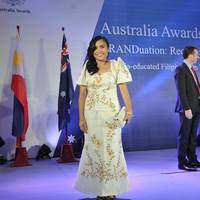








Uploads
Papers by Jenny Sunga-Amparo
Philippines is home to many precious metals refineries, where local artisanal gold smelting
industries use silver to draw gold out of used jewelry. Copper recovers the silver. The copperrich
wastewater contributes to local pollution. Alternative methods for silver recovery
include electrolytic recovery: removal of silver ions from solution, and conversion of the ions
into metallic silver.
Objectives. Explore operation and scale-up for the electrolytic recovery of silver for small-tomedium-
scale used gold smelting plants.
Methods. Effects of current and time were investigated in a laboratory scale, magneticallystirred
electrolysis reactor, using a sintered platinum anode and a stainless steel cathode.
Silver recovery (the removal of silver ions from solution) was evaluated at different levels of
constant operating current, and data was used to determine charge dose as the scale up and
operating factor. Charge dose was then used to obtain the operating conditions on a pilot
scale (100 L) system. A preliminary pilot test assessed silver recovery performance.
Results. Higher silver removal rates were noted at higher operating currents.
Electrodeposition at 9 amperes showed 98.7% silver recovery after 30 mins. The charge dose
for silver electrodeposition was 1.23 coulombs/mg silver ions removed, while the average
electrolysis energy requirement was about 0.59 kilowatt hours/kg of silver removed.
Conclusions. Preliminary comparisons on a 100-liter scale, showed the electrolytic process
had a higher silver removal (~ 90%) compared to copper displacement (~ 65%). Results are
useful for the process design of a complete field test system.
quarrying project in Barangay San Rafael, Rodriguez, Rizal Province, Philippines. In particular,
it described the timing, stakeholders involvement as well as the methods and tools used in the
process of determining the SA of LSQ. It also explained the results of the process of SA study.
Furthermore, it analyzed the process in which the SA of a quarrying project was determined.
The manner of determining social acceptability of a large scale project undertaken in
participation. Furthermore, the differing views by different stakeholders were articulated. The
study through the different data gathering methods (FGD, KII and social survey) became
instrumental in a favorable process of determining social acceptability. The process contributed
to the realization of genuine people’s participation in several ways. It helped: (1) raised people’s
information about a possible quarrying project; (2) people reclaimed their voice; (3) different
attitude positions are revealed and understood and (4) most important concerns about quarrying
are openly discussed.
estimates of the burden from toxic waste sites due to the absence of exposure data.
OBJECTIVE: We developed a disability-adjusted life year (DALY-based estimate of the disease
burden attributable to toxic waste sites. We focused on three low- and middle-income countries (LMICs): India, Indonesia, and the Philippines.
METHODS: Sites were identified through the Blacksmith Institute’s Toxic Sites Identification Program, a global effort to identify waste sites in LMICs. At least one of eight toxic chemicals was sampled in environmental media at each site, and the population at risk estimated. By combining
estimates of disease incidence from these exposures with population data, we calculated the DALYs
attributable to exposures at each site.
RESULTS: We estimated that in 2010, 8,629,750 persons were at risk of exposure to industrial pollutants at 373 toxic waste sites in the three countries, and that these exposures resulted in 828,722 DALYs, with a range of 814,934–1,557,121 DALYs, depending on the weighting factor used. "is disease burden is comparable to estimated burdens for outdoor air pollution (1,448,612 DALYs) and malaria (725,000 DALYs) in these countries. Lead and hexavalent chromium collectively
accounted for 99.2% of the total DALYs for the chemicals evaluated.
CONCLUSIONS: Toxic waste sites are responsible for a significant burden of disease in LMICs.
Although some factors, such as unidentified and unscreened sites, may cause our estimate to be an
under estimate of the actual burden of disease, other factors, such as extrapolation of environmental
sampling to the entire exposed population, may result in an over estimate of the burden of disease
attributable to these sites. Toxic waste sites are a major, and heretofore underrecognized, global
health problem.
A survey using a structured interview schedule was conducted to gather data. Results showed that the respondents were aware of the toxic substances that can harm their community and their environment. Many of them associated their diseases to their exposures to the chemicals and fumes from the industries mentioned. However, they have undecided attitude and perception towards these industries since they recognized the economic benefits of these industries to their families and to the community people as well. While the local government units concerned and other civil society groups have started to work together to address this pressing problem, identifying the knowledge, attitudes and behavior of the community people towards this pressing problem is deemed very important.
in the country and in Southeast Asia. But with the boom of the ULAB industry, a continued concern on the industry’s
Philippines to determine the perception of the respondents on the effects of lead recycling to their health and their
community. These two areas are where ULAB industry is concentrated.
Data were gathered from primary and secondary sources. Interview schedule using a structured interview guide
and key informant interview were used. The respondents believed that there are toxic and hazardous substances used in
lead recycling that contributed to their health problems and environmental pollution.
include air, soil and water. But while they are aware of the health and environmental risks this industry brings, they
also recognized its economic contribution to their families and their respective communities. The complexity of the
problem continues to pose a challenge that needs to be addressed soon to balance economic prosperity and the
communities’ welfare.
Objectives. Social capital plays an important role in reducing adversarial perceptions of initial site assessments of toxic hotspots. It also mobilizes stakeholders to work together to come up with a holistic and comprehensive site assessment. "is paper explains the role of social capital in the conduct of the Blacksmith Institute’s Global Inventory Project site assessment
protocol in the Philippines.
Methods. The study describes and analyzes the role of social capital in the conduct of the initial site assessment based on the actual experiences and observations of the authors and a
review of discourse that took place during regular meetings of the Blacksmith Institute’s local investigative team.
Results. As of June 2011, 105 polluted sites have been identified in the Philippines. Information on the location and background of these sites came from a variety of sources,
including government, environmental NGOs, academic institutions, community groups and industry associations. Seventy percent of used lead-acid battery recycling sites assessed were referred by the industry. More than 40% of artisanal and gold-mining sites were referred by regional government and local contacts.
Conclusions. Social capital has played an important role in the conduct of the Blacksmith Institute’s initial site assessment protocol. Relationships and networks within the group and
among di$erent organizations build and expand the social capital of the team and facilitate the site assessment process by making it easier to coordinate with local authorities and
gain better access to research, data and key persons. It also encourages local stakeholders to take ownership of assessment findings, sometimes leading to the mobilization of various community sectors in reviewing and planning interventions to address specific health and
pollution issues.
Philippines is home to many precious metals refineries, where local artisanal gold smelting
industries use silver to draw gold out of used jewelry. Copper recovers the silver. The copperrich
wastewater contributes to local pollution. Alternative methods for silver recovery
include electrolytic recovery: removal of silver ions from solution, and conversion of the ions
into metallic silver.
Objectives. Explore operation and scale-up for the electrolytic recovery of silver for small-tomedium-
scale used gold smelting plants.
Methods. Effects of current and time were investigated in a laboratory scale, magneticallystirred
electrolysis reactor, using a sintered platinum anode and a stainless steel cathode.
Silver recovery (the removal of silver ions from solution) was evaluated at different levels of
constant operating current, and data was used to determine charge dose as the scale up and
operating factor. Charge dose was then used to obtain the operating conditions on a pilot
scale (100 L) system. A preliminary pilot test assessed silver recovery performance.
Results. Higher silver removal rates were noted at higher operating currents.
Electrodeposition at 9 amperes showed 98.7% silver recovery after 30 mins. The charge dose
for silver electrodeposition was 1.23 coulombs/mg silver ions removed, while the average
electrolysis energy requirement was about 0.59 kilowatt hours/kg of silver removed.
Conclusions. Preliminary comparisons on a 100-liter scale, showed the electrolytic process
had a higher silver removal (~ 90%) compared to copper displacement (~ 65%). Results are
useful for the process design of a complete field test system.
quarrying project in Barangay San Rafael, Rodriguez, Rizal Province, Philippines. In particular,
it described the timing, stakeholders involvement as well as the methods and tools used in the
process of determining the SA of LSQ. It also explained the results of the process of SA study.
Furthermore, it analyzed the process in which the SA of a quarrying project was determined.
The manner of determining social acceptability of a large scale project undertaken in
participation. Furthermore, the differing views by different stakeholders were articulated. The
study through the different data gathering methods (FGD, KII and social survey) became
instrumental in a favorable process of determining social acceptability. The process contributed
to the realization of genuine people’s participation in several ways. It helped: (1) raised people’s
information about a possible quarrying project; (2) people reclaimed their voice; (3) different
attitude positions are revealed and understood and (4) most important concerns about quarrying
are openly discussed.
estimates of the burden from toxic waste sites due to the absence of exposure data.
OBJECTIVE: We developed a disability-adjusted life year (DALY-based estimate of the disease
burden attributable to toxic waste sites. We focused on three low- and middle-income countries (LMICs): India, Indonesia, and the Philippines.
METHODS: Sites were identified through the Blacksmith Institute’s Toxic Sites Identification Program, a global effort to identify waste sites in LMICs. At least one of eight toxic chemicals was sampled in environmental media at each site, and the population at risk estimated. By combining
estimates of disease incidence from these exposures with population data, we calculated the DALYs
attributable to exposures at each site.
RESULTS: We estimated that in 2010, 8,629,750 persons were at risk of exposure to industrial pollutants at 373 toxic waste sites in the three countries, and that these exposures resulted in 828,722 DALYs, with a range of 814,934–1,557,121 DALYs, depending on the weighting factor used. "is disease burden is comparable to estimated burdens for outdoor air pollution (1,448,612 DALYs) and malaria (725,000 DALYs) in these countries. Lead and hexavalent chromium collectively
accounted for 99.2% of the total DALYs for the chemicals evaluated.
CONCLUSIONS: Toxic waste sites are responsible for a significant burden of disease in LMICs.
Although some factors, such as unidentified and unscreened sites, may cause our estimate to be an
under estimate of the actual burden of disease, other factors, such as extrapolation of environmental
sampling to the entire exposed population, may result in an over estimate of the burden of disease
attributable to these sites. Toxic waste sites are a major, and heretofore underrecognized, global
health problem.
A survey using a structured interview schedule was conducted to gather data. Results showed that the respondents were aware of the toxic substances that can harm their community and their environment. Many of them associated their diseases to their exposures to the chemicals and fumes from the industries mentioned. However, they have undecided attitude and perception towards these industries since they recognized the economic benefits of these industries to their families and to the community people as well. While the local government units concerned and other civil society groups have started to work together to address this pressing problem, identifying the knowledge, attitudes and behavior of the community people towards this pressing problem is deemed very important.
in the country and in Southeast Asia. But with the boom of the ULAB industry, a continued concern on the industry’s
Philippines to determine the perception of the respondents on the effects of lead recycling to their health and their
community. These two areas are where ULAB industry is concentrated.
Data were gathered from primary and secondary sources. Interview schedule using a structured interview guide
and key informant interview were used. The respondents believed that there are toxic and hazardous substances used in
lead recycling that contributed to their health problems and environmental pollution.
include air, soil and water. But while they are aware of the health and environmental risks this industry brings, they
also recognized its economic contribution to their families and their respective communities. The complexity of the
problem continues to pose a challenge that needs to be addressed soon to balance economic prosperity and the
communities’ welfare.
Objectives. Social capital plays an important role in reducing adversarial perceptions of initial site assessments of toxic hotspots. It also mobilizes stakeholders to work together to come up with a holistic and comprehensive site assessment. "is paper explains the role of social capital in the conduct of the Blacksmith Institute’s Global Inventory Project site assessment
protocol in the Philippines.
Methods. The study describes and analyzes the role of social capital in the conduct of the initial site assessment based on the actual experiences and observations of the authors and a
review of discourse that took place during regular meetings of the Blacksmith Institute’s local investigative team.
Results. As of June 2011, 105 polluted sites have been identified in the Philippines. Information on the location and background of these sites came from a variety of sources,
including government, environmental NGOs, academic institutions, community groups and industry associations. Seventy percent of used lead-acid battery recycling sites assessed were referred by the industry. More than 40% of artisanal and gold-mining sites were referred by regional government and local contacts.
Conclusions. Social capital has played an important role in the conduct of the Blacksmith Institute’s initial site assessment protocol. Relationships and networks within the group and
among di$erent organizations build and expand the social capital of the team and facilitate the site assessment process by making it easier to coordinate with local authorities and
gain better access to research, data and key persons. It also encourages local stakeholders to take ownership of assessment findings, sometimes leading to the mobilization of various community sectors in reviewing and planning interventions to address specific health and
pollution issues.